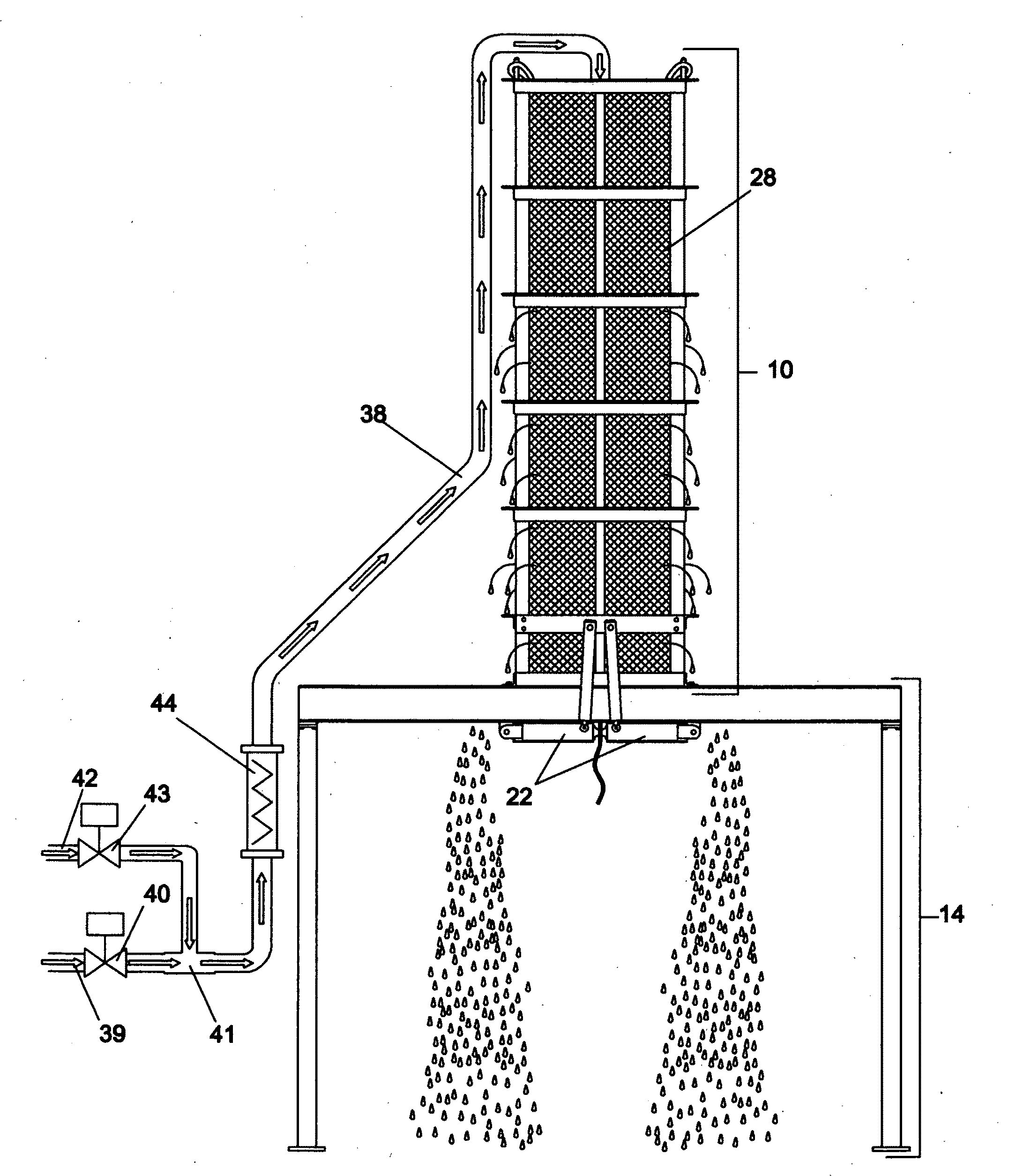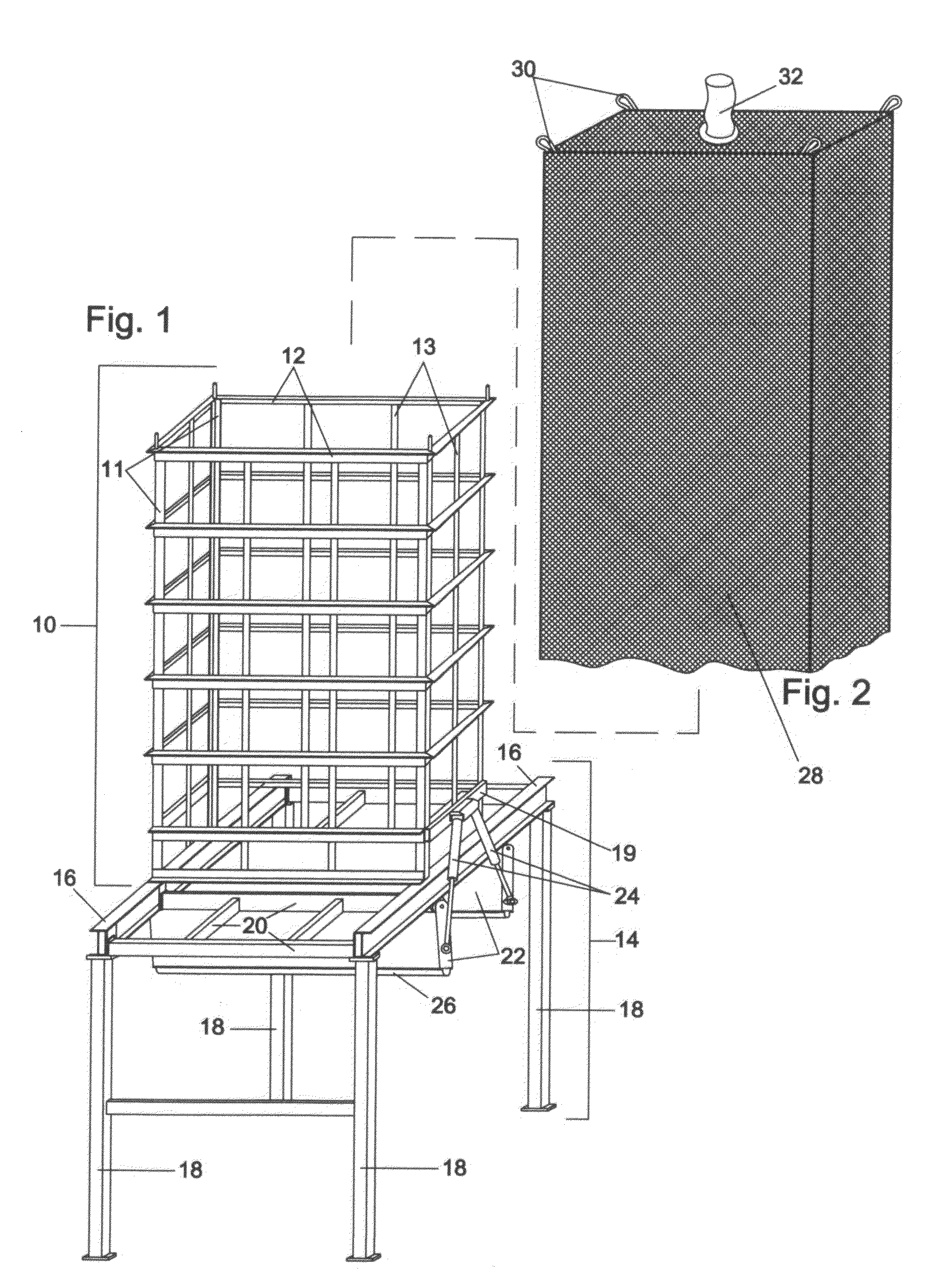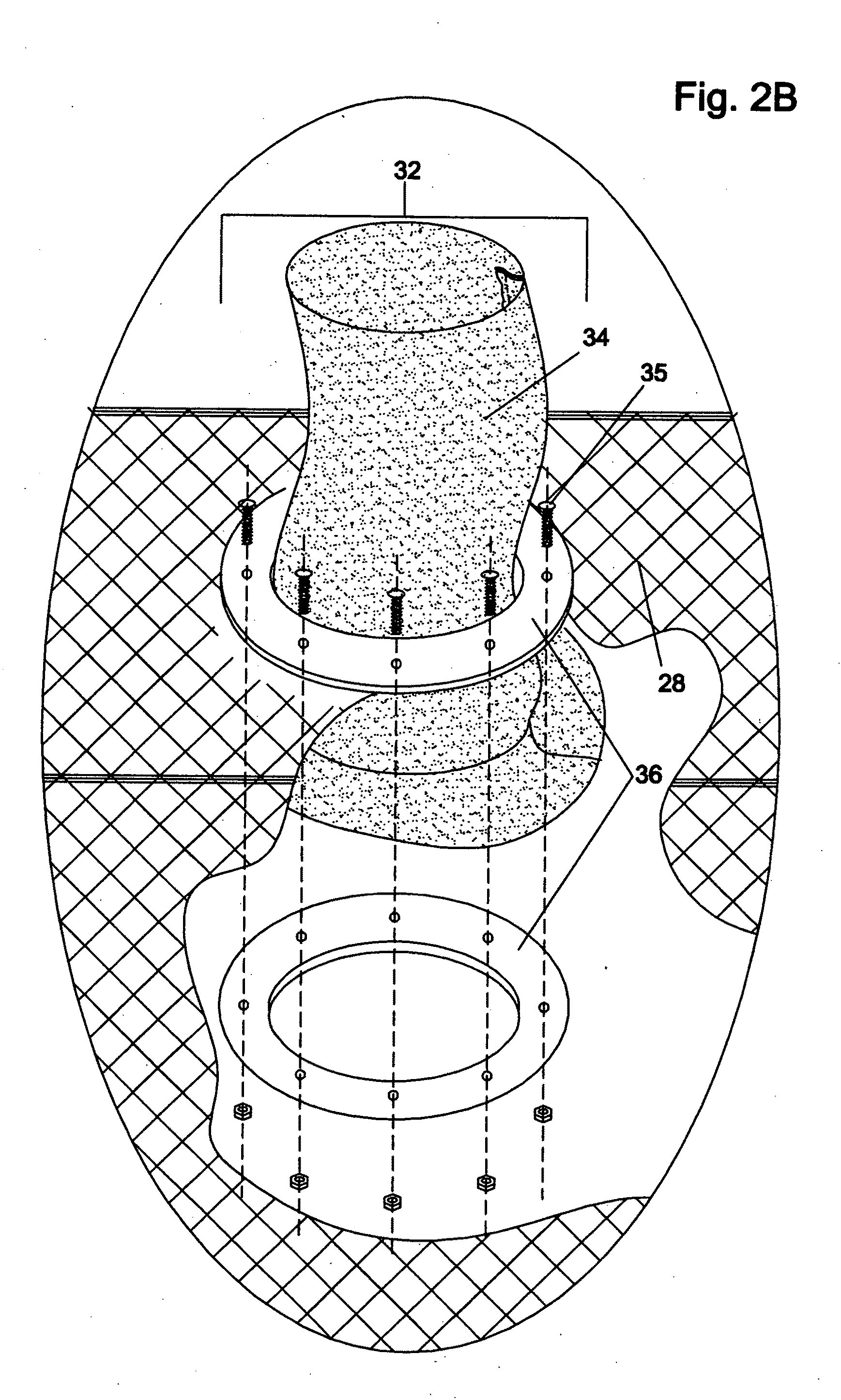Method of dewatering solids laden liquids utilizing a reusable filter element
- Summary
- Abstract
- Description
- Claims
- Application Information
AI Technical Summary
Benefits of technology
Problems solved by technology
Method used
Image
Examples
first embodiment
—FIRST EMBODIMENT
[0038]One embodiment of the bag retainer 10 and under carriage 14 is shown in FIG. 1. The frame work in this embodiment is constructed with (4) four vertical angle iron uprights 11. The uprights are connected with rectangular frames 12 that run horizontal around the structure. I contemplate these frames 12 to be heavy angle iron but they could be structural tubing or many other types of materials. In this embodiment there are (5) five of these frames 12. These frames 12 are spaced vertically down the structure to provide sufficient strength to retain the pressure created by the fluid column as the bag is filled. This embodiment has (6) six vertical bars 13 running from the top of the frame work to the bottom. These bars are in place to help prevent the bag from protruding out between the angle iron frames 12 as the bag is filling with fluid. Additional support bars can be used as needed to prevent this from occurring. The filter retainer 10 is fixed to the top of th...
PUM
| Property | Measurement | Unit |
|---|---|---|
| Pressure | aaaaa | aaaaa |
| Flow rate | aaaaa | aaaaa |
| Gravity | aaaaa | aaaaa |
Abstract
Description
Claims
Application Information
 Login to View More
Login to View More - R&D
- Intellectual Property
- Life Sciences
- Materials
- Tech Scout
- Unparalleled Data Quality
- Higher Quality Content
- 60% Fewer Hallucinations
Browse by: Latest US Patents, China's latest patents, Technical Efficacy Thesaurus, Application Domain, Technology Topic, Popular Technical Reports.
© 2025 PatSnap. All rights reserved.Legal|Privacy policy|Modern Slavery Act Transparency Statement|Sitemap|About US| Contact US: help@patsnap.com



